Archive for October 2016
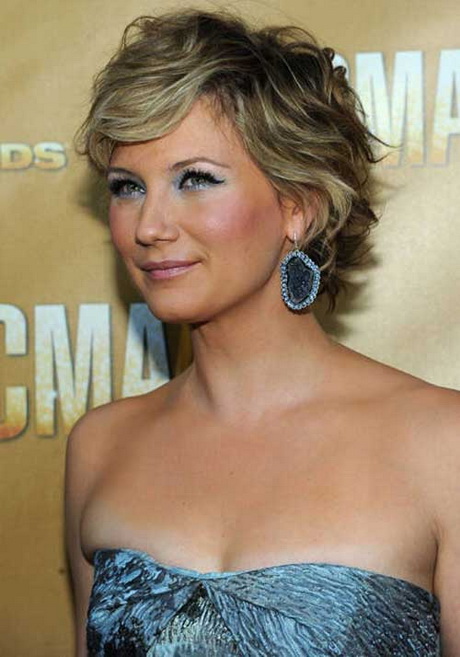 Beautiful Short Hairstyles for Women Curly Hairhttp://gvenny.com/images/beautiful-short-hairstyles-for-women/beautiful-short-hairstyles-for-women-16-17.jpg
Beautiful Short Hairstyles for Women Curly Hairhttp://gvenny.com/images/beautiful-short-hairstyles-for-women/beautiful-short-hairstyles-for-women-16-17.jpgLovely Short Hairstyles For Women
A hairstyle, hairdo, or haircut refers to the styling of mane, on the real human scalp usually. Sometimes, this could also mean an editing of beard hair. The fashioning of hair can be considered an element of personal grooming, fashion, and cosmetics, although practical, cultural, and popular considerations also influence some hairstyles. The oldest known depiction of hair braiding dates back about 30,000 years. In historical civilizations, women's locks was often elaborately and carefully dressed in special ways. In Imperial Rome, women used their scalp in complicated styles. From the time of the Roman Empire[citation needed] before Middle Ages, many women grew their mane as long as it would develop normally. During the Roman Empire as well as in the 16th century under western culture, women started out to wear their hair in ornate styles extremely. In the later half of the 15th century and on into the 16th century an extremely high hairline on the forehead was considered attractive. Through the 15th and 16th centuries, Western european men used their hair cropped no longer than shoulder-length. In the early 17th century male hairstyles grew longer, with curls or waves being considered appealing.
The male wig was pioneered by King Louis XIII of France (1601-1643) in 1624. Periwigs or perukes for men were released in to the English-speaking world with other French styles in 1660. Late 17th-century wigs were lengthy and wavy, but became shorter in the mid-18th century, by which time they were white normally. Short hair for fashionable men was something of the Neoclassical movement. In the first 19th century the man beard, and moustaches and sideburns also, made a strong reappearance. From your 16th to the 19th hundred years, European women's scalp became more obvious while their head of hair coverings grew smaller. In the center of the 18th hundred years the pouf style developed. Through the First World Battle, women around the global world started to shift to shorter hairstyles that were much easier to manage. In the early 1950s women's hair was generally curled and worn in a variety of styles and lengths. In the 1960s, many women commenced to wear their scalp in short modern cuts such as the pixie cut, while in the 1970s, head of hair tended to looser be longer and. In both the 1960s and 1970s many men and women used their hair very direct and long. In the 1980s, women pulled back their hair with scrunchies. During the 1980s, punk hair styles were implemented by some individuals.
Throughout times, people have worn their head of hair in a wide variety of styles, determined by the fashions of the culture they live in largely. Hairstyles are signifiers and markers of social class, age, marital status, racial identification, political beliefs, and attitudes about gender.
In many cultures, for religious reasons often, women's wild hair is covered while in public areas, and in some, such as Haredi Judaism or European Orthodox areas, women's scalp is shaved or minimize very brief, and covered with wigs.Only since the end of World Conflict I have women begun to wear their wild hair brief and in fairly natural styles.
Paleolithic
- The oldest known duplication of hair braiding lies again about 30,000 years: the Venus of Willendorf, known in academia as the girl of Willendorf now, of a female figurine from the Paleolithic, predicted to obtain been made between about 28,000 and 25,000 BCE.The Venus of Brassempouy matters about 25,000 yrs . old and indisputably shows hairstyling.
Bronze Age
- In Bronze Era razors were known and in use by some men, however, not on a daily basis since the technique was rather distressing and required resharpening of the tool which reduced its stamina.
Ancient history
- In historical civilizations, women's scalp was often elaborately and carefully dressed up in special ways. Women coloured their hair, curled it, and pinned it up (ponytail) in many ways. They set their head of hair in curls and waves using damp clay, that they dried in sunlight and combed out then, or else by by using a jelly manufactured from quince seeds soaked in drinking water, or styling tongs and styling irons of varied kinds.
Roman Empire and DARK AGES
- Between 27 BC and 102 Advertising, in Imperial Rome, women used their mane in complicated styles: a mass of curls at the top, or in rows of waves, attracted back into braids or ringlets. Eventually noblewomen's hairstyles grew so complex that they required daily attention from several slaves and a stylist to become maintained. The mane was often lightened using real wood ash, unslaked lime and sodium bicarbonate, or darkened with copper filings, oak-apples or leeches marinated in wine beverages and vinegar. It had been augmented by wigs, pads and hairpieces, and held set up by nets, pins, pomade and combs. Beneath the Byzantine Empire, noblewomen covered most of their hair with silk caps and pearl nets.
Best HAIRSTYLES For Short Hair Women
- It is very important to choose the best short hairstyles for girls since it takes on an enormous part of your style. Getting the right hairstyle can offer you with happiness and positive feelings. Find out which hairstyle is simply perfect for your character and personality. You should seek advice from your hairstylist before having a new haircut also. After all, changes are excellent and it can truly add positive outlook in your life also. Feel free to browse our assortment of short hairstyles for women and select the the one that your like best.
Beautiful Short Hairstyles for Black Women Short Hairstyles Trendy
 http://www.shorthaircutstrendy.com/wp-content/uploads/2014/06/beautiful-short-hairstyles-for-black-women-9.jpg
http://www.shorthaircutstrendy.com/wp-content/uploads/2014/06/beautiful-short-hairstyles-for-black-women-9.jpg19. Wavy Hairstyle For MediumLength Hair
 http://cutediyprojects.com/wp-content/uploads/2015/04/Wavy-Hairstyle-For-Medium-Length-Hair.jpg
http://cutediyprojects.com/wp-content/uploads/2015/04/Wavy-Hairstyle-For-Medium-Length-Hair.jpgLovely Short Curly Hairstyles for Women Hairstyles Weekly
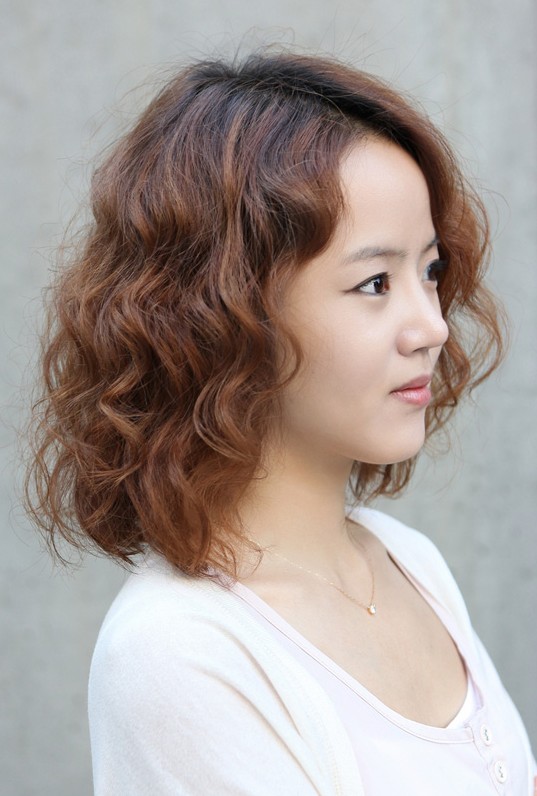 http://hairstylesweekly.com/images/2012/12/Lovely-Short-Curly-Hairstyles-for-Women.jpg
http://hairstylesweekly.com/images/2012/12/Lovely-Short-Curly-Hairstyles-for-Women.jpg19. Wavy Hairstyle For MediumLength Hair
 http://cutediyprojects.com/wp-content/uploads/2015/04/Wavy-Hairstyle-For-Medium-Length-Hair.jpg
http://cutediyprojects.com/wp-content/uploads/2015/04/Wavy-Hairstyle-For-Medium-Length-Hair.jpgOIP.Mae6d01e850ba23300e56965dcb3d3557o2
456DF75538A44B0E28F0300E9D8D5228895F9FAB04http://gvenny.com/beautiful-short-hairstyles-for-women/
Embed Our image to your website
ThumbnailImageEmbed Our image to a Forum
ThumbnailImage
Beautiful Short Hairstyles for Women Curly Hair
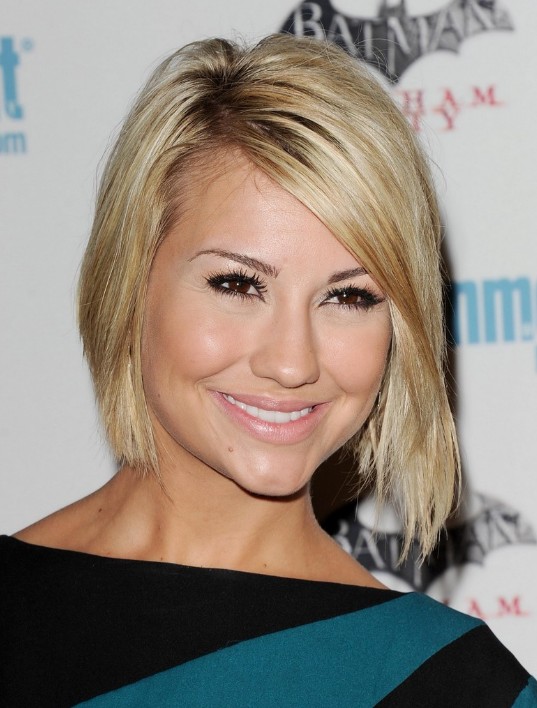 Layered Graduated Bob Hairstyle Hairstyles Weeklyhttp://hairstylesweekly.com/images/2012/06/Layered-Graduated-Bob-Hairstyle.jpg
Layered Graduated Bob Hairstyle Hairstyles Weeklyhttp://hairstylesweekly.com/images/2012/06/Layered-Graduated-Bob-Hairstyle.jpgBob Hairstyles Haircuts
A hairstyle, hairdo, or haircut identifies the styling of hair, usually on the individual head. Sometimes, this could also mean an editing of beard hair. The fashioning of hair can be viewed as an element of personal grooming, fashion, and cosmetics, although practical, cultural, and popular considerations also influence some hairstyles. The oldest known depiction of hair braiding goes back about 30,000 years. In traditional civilizations, women's locks was often elaborately and carefully dressed up in special ways. In Imperial Rome, women wore their wild hair in complicated styles. From enough time of the Roman Empire[citation needed] before Middle Ages, many women grew their mane so long as it would increase normally. During the Roman Empire as well as in the 16th century under western culture, women began to wear their hair in extremely ornate styles. Inside the later half of the 15th century and on into the 16th century an extremely high hairline on the forehead was considered attractive. During the 16th and 15th generations, Western european men wore their mane cropped no than shoulder-length much longer. In the early 17th century male hairstyles grew longer, with waves or curls being considered desirable.
The male wig was pioneered by Ruler Louis XIII of France (1601-1643) in 1624. Perukes or periwigs for men were created into the English-speaking world with other French styles in 1660. 17th-century wigs were lengthy and wavy late, but became shorter in the mid-18th century, where time these were normally white. Short hair for fashionable men was something of the Neoclassical movement. In the early 19th century the man beard, and moustaches and sideburns also, made a strong reappearance. From the 16th to the 19th hundred years, European women's hair became more noticeable while their mane coverings grew smaller. In the middle of the 18th century the pouf style developed. During the First World War, women around the world started to shift to shorter hairstyles that were much easier to manage. In the early 1950s women's hair was generally curled and worn in a number of styles and lengths. In the 1960s, many women began to wear their wild hair in a nutshell modern cuts like the pixie cut, within the 1970s, head of hair tended to be much longer and looser. In both the 1960s and 1970s many men and women wore their hair very long and straight. In the 1980s, women pulled back their hair with scrunchies. During the 1980s, punk hairstyles were implemented by some individuals.
Throughout times, folks have worn their head of hair in a wide variety of styles, determined by the fashions of the culture they stay in largely. Hairstyles are markers and signifiers of social class, age, marital status, racial identification, political beliefs, and attitudes about gender.
In many civilizations, for religious reasons often, women's wild hair is protected while in public, and in a few, such as Haredi Judaism or Western Orthodox neighborhoods, women's wild hair is shaved or cut very brief, and protected with wigs.Only because the end of World Warfare I have women begun to wear their scalp short and in quite natural styles.
Paleolithic
- The oldest known reproduction of hair braiding lies back again about 30,000 years: the Venus of Willendorf, known in academia as the Woman of Willendorf now, of a lady figurine from the Paleolithic, projected to acquire been made between about 28,000 and 25,000 BCE.The Venus of Brassempouy matters about 25,000 years old and shows hairstyling indisputably.
Bronze Age
- In Bronze Age razors were known and in use by some men, but not on a daily basis since the process was rather annoying and required resharpening of the tool which reduced its stamina.
Ancient history
- In ancient civilizations, women's wild hair was often elaborately and carefully dressed in special ways. Women colored their locks, curled it, and pinned it up (ponytail) in a variety of ways. They set in place their hair in curls and waves using damp clay, that they dried out in sunlight and combed out then, or else by utilizing a jelly manufactured from quince seeds soaked in drinking water, or styling tongs and styling irons of varied kinds.
Roman Empire and Middle Ages
- Between 27 BC and 102 AD, in Imperial Rome, women used their hair in complicated styles: scores of curls on top, or in rows of waves, attracted back into braids or ringlets. Eventually noblewomen's hairstyles grew so complex that they required daily attention from several slaves and a stylist in order to be maintained. The mane was often lightened using timber ash, unslaked lime and sodium bicarbonate, or darkened with copper filings, oak-apples or leeches marinated in wines and vinegar. It was augmented by wigs, pads and hairpieces, and held set up by nets, pins, combs and pomade. Under the Byzantine Empire, noblewomen covered most of their hair with silk caps and pearl nets.
Best Hair Styles For Short Hair Women
- It is vital to choose the best short hair styles for ladies since it plays a huge part of your style. Having the right hairstyle provides you with happiness and positive thoughts. Find out which hairstyle is exquisite for your character and personality. You should also talk to your hairstylist before having a new haircut. After all, changes are excellent and it can truly add positive prospect in your life also. Feel absolve to browse our collection of short hairstyles for females and choose the one which your like best.
Asymmetrical Bob Haircuts 2014 5
 http://thebestfashionblog.com/wp-content/uploads/2014/01/Asymmetrical-Bob-Haircuts-2014-5.jpg
http://thebestfashionblog.com/wp-content/uploads/2014/01/Asymmetrical-Bob-Haircuts-2014-5.jpgBob Haircuts Bob Hairstyles for Chin Length
 http://www.styles-new.com/images/1344182929_bob-hairstyles.jpg
http://www.styles-new.com/images/1344182929_bob-hairstyles.jpg14_bobhairstyle Best Hairstyles
 http://www.besthairstyles2013.com/wp-content/uploads/2013/02/14_bob-hairstyle.jpg
http://www.besthairstyles2013.com/wp-content/uploads/2013/02/14_bob-hairstyle.jpgMessy Bob Hairstyles – VIP Hairstyles
 http://www.viphairstyles.com/wp-content/uploads/2012/11/drew-barrymores-Bob.jpg
http://www.viphairstyles.com/wp-content/uploads/2012/11/drew-barrymores-Bob.jpgOIP.M87e123c25b19e5309b0bb58e29beabd4H1
114203775096BB3DCC3760A2DE224D67174196F3A2http://hairstylesweekly.com/the-graduated-bob-hairstyles/layered-graduated-bob-hairstyle/
Embed Our image to your website
ThumbnailImageEmbed Our image to a Forum
ThumbnailImage
Layered Graduated Bob Hairstyle Hairstyles Weekly
 Top Beautiful Short Women Hairstyles for summer 2010 TOP HAIRSTYLEhttps://blogger.googleusercontent.com/img/b/R29vZ2xl/AVvXsEiYkhee5vcGYwNNgHRdYSVVPjQ_LGb5Em2It8PfXs79utUM8kUilZp1hbGQii3K2hnj9XRPIG3WiNA4-Us1RKs4lsgSNc_trKfShQb1_Je4MLqJmMlW6OP4Qg5rjKB6X8ekCvKkQMSj1jQ/s400/Top+Beautiful+Short+Women+Hairstyles+for+summer+2010.jpg
Top Beautiful Short Women Hairstyles for summer 2010 TOP HAIRSTYLEhttps://blogger.googleusercontent.com/img/b/R29vZ2xl/AVvXsEiYkhee5vcGYwNNgHRdYSVVPjQ_LGb5Em2It8PfXs79utUM8kUilZp1hbGQii3K2hnj9XRPIG3WiNA4-Us1RKs4lsgSNc_trKfShQb1_Je4MLqJmMlW6OP4Qg5rjKB6X8ekCvKkQMSj1jQ/s400/Top+Beautiful+Short+Women+Hairstyles+for+summer+2010.jpgLovely Short Hairstyles For Women
A hair, hairdo, or haircut refers to the styling of locks, usually on the real human scalp. Sometimes, this could imply an editing and enhancing of beard wild hair also. The fashioning of hair can be viewed as an aspect of personal grooming, fashion, and cosmetics, although practical, cultural, and popular considerations also influence some hairstyles. The oldest known depiction of hair braiding goes back about 30,000 years. In traditional civilizations, women's head of hair was often elaborately and carefully dressed in special ways. In Imperial Rome, women used their mane in complicated styles. From the time of the Roman Empire[citation needed] until the Middle Ages, most women grew their scalp so long as it could obviously expand. During the Roman Empire as well as in the 16th century in the western world, women started to wear their hair in ornate styles extremely. In the later half of the 15th century and on in to the 16th century an extremely high hairline on the forehead was considered attractive. Through the 16th and 15th generations, Western men used their hair cropped no more than shoulder-length. In the first 17th century male hairstyles grew longer, with curls or waves being considered suitable.
The male wig was pioneered by King Louis XIII of France (1601-1643) in 1624. Perukes or periwigs for men were presented into the English-speaking world with other French styles in 1660. Late 17th-century wigs were very long and wavy, but became shorter in the mid-18th century, by which time these were white normally. Short hair for fashionable men was a product of the Neoclassical movement. In the early 19th hundred years the men beard, and moustaches and sideburns also, made a strong reappearance. From 16th to the 19th hundred years, European women's mane became more obvious while their mane coverings grew smaller. In the center of the 18th century the pouf style developed. Through the First World Battle, women around the world started to shift to shorter hairstyles that were better to manage. In the early 1950s women's hair was generally curled and worn in a variety of styles and lengths. In the 1960s, a lot of women started to wear their locks in a nutshell modern cuts including the pixie cut, within the 1970s, locks tended to looser be much longer and. In both 1960s and 1970s many men and women wore their hair very long and straight. Within the 1980s, women pulled back their hair with scrunchies. Through the 1980s, punk hairstyles were adopted by some people.
Throughout times, folks have worn their mane in a multitude of styles, determined by the fashions of the culture they stay in largely. Hairstyles are markers and signifiers of social class, age, marital status, racial identification, political beliefs, and attitudes about gender.
In many ethnicities, for religious reasons often, women's wild hair is protected while in public areas, and in some, such as Haredi Judaism or European Orthodox areas, women's wild hair is shaved or lower very short, and covered with wigs.Only since the end of World War I've women started to wear their scalp brief and in quite natural styles.
Paleolithic
- The oldest known duplication of scalp braiding lies back again about 30,000 years: the Venus of Willendorf, known in academia as the Woman of Willendorf now, of a lady figurine from the Paleolithic, estimated to have been made between about 28,000 and 25,000 BCE.The Venus of Brassempouy matters about 25,000 years old and indisputably shows hairstyling.
Bronze Age
- In Bronze Age group razors were known and used by some men, however, not on a regular basis since the treatment was rather annoying and required resharpening of the tool which reduced its endurance.
Ancient history
- In traditional civilizations, women's mane was often elaborately and carefully dressed in special ways. Women colored their wild hair, curled it, and pinned it up (ponytail) in many ways. They set their scalp in curls and waves using damp clay, which they dried in sunlight and then combed out, or else by by using a jelly made of quince seed products soaked in normal water, or curling tongs and styling irons of varied kinds.
Roman Empire and Middle Ages
- Between 27 BC and 102 Advertising, in Imperial Rome, women used their wild hair in complicated styles: a mass of curls at the top, or in rows of waves, drawn back into ringlets or braids. Eventually noblewomen's hairstyles grew so complex that they required daily attention from several slaves and a stylist to become maintained. The wild hair was lightened using solid wood ash, unslaked lime and sodium bicarbonate, or darkened with copper filings, oak-apples or leeches marinated in wine beverages and vinegar. It was augmented by wigs, hairpieces and pads, and held set up by nets, pins, pomade and combs. Under the Byzantine Empire, noblewomen covered most of their hair with silk caps and pearl nets.
Best HAIRSTYLES For Short Hair Women
- It is very important to choose the best short hair styles for women since it performs an enormous part of your style. Getting the right hairstyle can provide you with happiness and positive thoughts. Find out which hairstyle is ideal for your personality and character. You should also consult your hairstylist before having a new haircut. After all, changes are great and additionally, it may add positive outlook in your daily life. Feel absolve to browse our collection of short hairstyles for girls and select the one that your like best.
Lovely Short Bob Hairstyle for Asian Girls Hairstyles Weekly
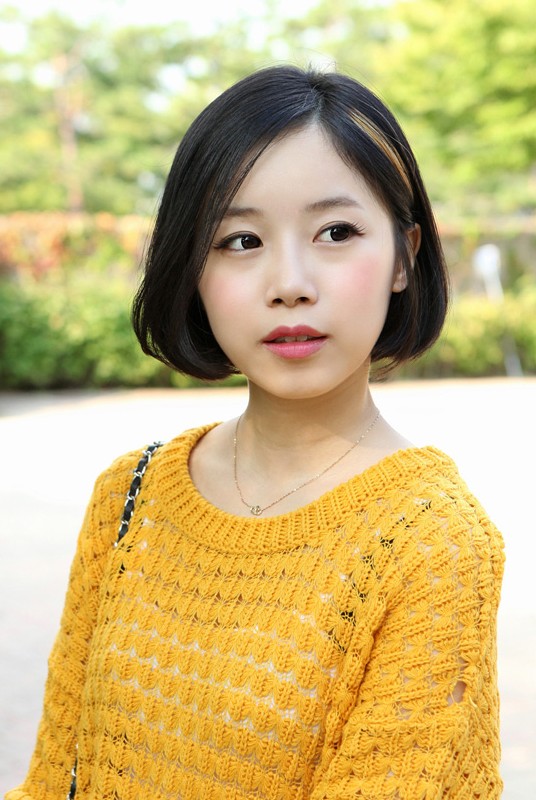 http://hairstylesweekly.com/images/2012/12/Lovely-Short-Bob-Hairstyle-for-Asian-Girls.jpg
http://hairstylesweekly.com/images/2012/12/Lovely-Short-Bob-Hairstyle-for-Asian-Girls.jpgBeautiful Short Hairstyles for Black Women Short Hairstyles 2015
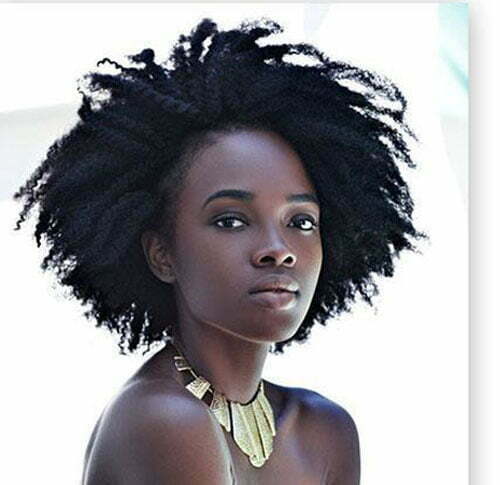 http://www.short-haircut.com/wp-content/uploads/2013/12/Beautiful-Short-Hairstyles-for-Black-Women-1.jpg
http://www.short-haircut.com/wp-content/uploads/2013/12/Beautiful-Short-Hairstyles-for-Black-Women-1.jpgwomen’s hair styles. A short hairstyle not only changes your hair
 http://gvenny.com/images/beautiful-short-hairstyles-for-women/beautiful-short-hairstyles-for-women-16-9.jpg
http://gvenny.com/images/beautiful-short-hairstyles-for-women/beautiful-short-hairstyles-for-women-16-9.jpgLovely Short Bob Hairstyle for Asian Girls Hairstyles Weekly
 http://hairstylesweekly.com/images/2012/12/Lovely-Short-Bob-Hairstyle-for-Asian-Girls.jpg
http://hairstylesweekly.com/images/2012/12/Lovely-Short-Bob-Hairstyle-for-Asian-Girls.jpgOIP.Mec308baca44611a8e5efa6f9f3854dddH1
50C37CA21E408A7F87F1AA2293D4FA7ED5BC9DD34Ahttp://tophairstyleforwomen.blogspot.com/2010/03/top-beautiful-short-women-hairstyles.html
Embed Our image to your website
ThumbnailImageEmbed Our image to a Forum
ThumbnailImage
Top Beautiful Short Women Hairstyles for summer 2010 TOP HAIRSTYLE
 25 Lovely Short Hair Styles For Women Over 50 CreativeFanhttp://creativefan.com/important/cf/2012/10/short-hair-styles-for-women-over-50/old-women.jpg
25 Lovely Short Hair Styles For Women Over 50 CreativeFanhttp://creativefan.com/important/cf/2012/10/short-hair-styles-for-women-over-50/old-women.jpgLovely Short Hairstyles For Women
A hairstyle, hairdo, or haircut identifies the styling of scalp, on the real human scalp usually. Sometimes, this may imply an editing and enhancing of beard scalp also. The fashioning of hair can be viewed as an element of personal grooming, fashion, and cosmetics, although practical, cultural, and popular concerns affect some hairstyles also. The oldest known depiction of hair braiding goes back about 30,000 years. In old civilizations, women's locks was often elaborately and carefully dressed in special ways. In Imperial Rome, women wore their locks in complicated styles. From the time of the Roman Empire[citation needed] until the Middle Ages, nearly all women grew their scalp as long as it could increase obviously. During the Roman Empire as well as in the 16th century in the western world, women started to wear their hair in extremely ornate styles. In the later half of the 15th century and on into the 16th century a very high hairline on the forehead was considered attractive. During the 15th and 16th decades, Western men used their mane cropped no than shoulder-length longer. In the first 17th century male hairstyles grew longer, with curls or waves being considered attractive.
The male wig was pioneered by Ruler Louis XIII of France (1601-1643) in 1624. Periwigs or perukes for men were launched in to the English-speaking world with other French styles in 1660. Late 17th-century wigs were lengthy and wavy, but became shorter in the mid-18th century, where time these were normally white. Short hair for fashionable men was a product of the Neoclassical movement. In the early 19th century the guy beard, and also moustaches and sideburns, made a solid reappearance. From your 16th to the 19th hundred years, European women's head of hair became more obvious while their head of hair coverings grew smaller. In the center of the 18th hundred years the pouf style developed. Through the First World War, women around the global world started to shift to shorter hairstyles that were easier to manage. In the early 1950s women's hair was generally curled and worn in a number of styles and lengths. In the 1960s, many women started out to wear their locks in short modern cuts like the pixie cut, while in the 1970s, wild hair tended to be longer and looser. In both the 1960s and 1970s a lot of men and women wore their hair very long and straight. In the 1980s, women pulled back their hair with scrunchies. During the 1980s, punk hair styles were implemented by some individuals.
Throughout times, people have worn their locks in a wide variety of styles, determined by the fashions of the culture they stay in largely. Hairstyles are markers and signifiers of social class, age, marital status, racial identification, political beliefs, and attitudes about gender.
In many cultures, for religious reasons often, women's head of hair is protected while in public, and in some, such as Haredi Judaism or European Orthodox areas, women's locks is shaved or slice very brief, and protected with wigs.Only because the end of World Conflict I've women begun to wear their scalp brief and in reasonably natural styles.
Paleolithic
- The oldest known duplication of wild hair braiding lies back again about 30,000 years: the Venus of Willendorf, known in academia as the girl of Willendorf now, of a lady figurine from the Paleolithic, estimated to own been made between about 28,000 and 25,000 BCE.The Venus of Brassempouy counts about 25,000 yrs . old and indisputably shows hairstyling.
Bronze Age
- In Bronze Years razors were known and in use by some men, but not on a regular basis since the procedure was rather upsetting and required resharpening of the tool which reduced its endurance.
Ancient history
- In old civilizations, women's mane was often elaborately and carefully dressed up in special ways. Women colored their wild hair, curled it, and pinned it up (ponytail) in many ways. They arranged their wild hair in waves and curls using damp clay, that they dried in the sun and then combed out, or else by by using a jelly manufactured from quince seed products soaked in drinking water, or styling tongs and styling irons of varied kinds.
Roman Empire and Middle Ages
- Between 27 BC and 102 Advertising, in Imperial Rome, women used their mane in complicated styles: a mass of curls on top, or in rows of waves, attracted back to braids or ringlets. Eventually noblewomen's hairstyles grew so complex that they required daily attention from several slaves and a stylist in order to be maintained. The hair was lightened using hardwood ash, unslaked lime and sodium bicarbonate, or darkened with copper filings, oak-apples or leeches marinated in vinegar and wine beverage. It was augmented by wigs, pads and hairpieces, and held in place by nets, pins, pomade and combs. Beneath the Byzantine Empire, noblewomen covered most of their hair with silk pearl and caps nets.
Best HAIRSTYLES For Short Hair Women
- It is very important to find the best short hairstyles for females since it performs a huge part of your style. Getting the right hairstyle can provide you with delight and positive thoughts. Find out which hairstyle is simply perfect for your character and personality. You should check with your hairstylist before having a new haircut also. After all, changes are great and it can add positive perspective in your life also. Feel absolve to browse our collection of short hairstyles for ladies and select the the one which your like best.
Beautiful Short Hairstyles for Black Women Short Hairstyles 2015
 http://www.hairstyleshelp.com/wp-content/uploads/2013/11/Beautiful-Short-Haircuts-for-Older-Women.jpg
http://www.hairstyleshelp.com/wp-content/uploads/2013/11/Beautiful-Short-Haircuts-for-Older-Women.jpgShort Hairstyles For Older Women Beautiful Hairstyles
 http://www.beautifulhairstyle.net/wp-content/uploads/2013/12/Short-Hairstyles-For-Older-Women-With-Gray-Hair.jpg
http://www.beautifulhairstyle.net/wp-content/uploads/2013/12/Short-Hairstyles-For-Older-Women-With-Gray-Hair.jpgToo Cool For School Short Hair For Girls
 https://blogger.googleusercontent.com/img/b/R29vZ2xl/AVvXsEhyWUiwjlKouUCcFtvPhPbu8U7813TP3UJk_ye87gwZBiFwuz9UwS0gAlElrB2yApc8Y3J1b24mU7AeEo74HA9HECein9vKODmSMsjPOPzWwwiBxwxtqtMfNV-SxqCb4hKQRb6Su9Zr9bJ4/s1600/Cool-Short-Hairstyles-2012-546754-1.jpg
https://blogger.googleusercontent.com/img/b/R29vZ2xl/AVvXsEhyWUiwjlKouUCcFtvPhPbu8U7813TP3UJk_ye87gwZBiFwuz9UwS0gAlElrB2yApc8Y3J1b24mU7AeEo74HA9HECein9vKODmSMsjPOPzWwwiBxwxtqtMfNV-SxqCb4hKQRb6Su9Zr9bJ4/s1600/Cool-Short-Hairstyles-2012-546754-1.jpgShort Hairstyles for Women over 50 Inspired by Celebrities
 http://www.allfashionstyles.com/wp-content/uploads/2015/05/short-hairstyles-for-women-over-50_4.jpg
http://www.allfashionstyles.com/wp-content/uploads/2015/05/short-hairstyles-for-women-over-50_4.jpgOIP.Md07ed81a39b914635696433709909fbcH1
4816972F348369CE3D3D9385803FD20E51E5B695CAhttp://creativefan.com/short-hair-styles-for-women-over-50/
Embed Our image to your website
ThumbnailImageEmbed Our image to a Forum
ThumbnailImage
25 Lovely Short Hair Styles For Women Over 50 CreativeFan
 Beautiful Women with Short Hair The Hottest Women Short Haircutshttp://esq.h-cdn.co/assets/cm/15/05/54cde6ecd5f7b_-_esq-01-beautiful-women-short-hair-030413-mdn.jpg
Beautiful Women with Short Hair The Hottest Women Short Haircutshttp://esq.h-cdn.co/assets/cm/15/05/54cde6ecd5f7b_-_esq-01-beautiful-women-short-hair-030413-mdn.jpgHottest Short Hairstyles Women
A hair, hairdo, or haircut refers to the styling of wild hair, on the individual scalp usually. Sometimes, this could imply an editing of beard wild hair also. The fashioning of hair can be considered an element of personal grooming, fashion, and cosmetics, although practical, cultural, and popular considerations also influence some hairstyles. The oldest known depiction of hair braiding goes back about 30,000 years. In traditional civilizations, women's mane was often elaborately and carefully dressed up in special ways. In Imperial Rome, women used their head of hair in complicated styles. From enough time of the Roman Empire[citation needed] before Middle Ages, nearly all women grew their locks so long as it would develop effortlessly. Through the Roman Empire as well as in the 16th century in the western world, women started to wear their hair in ornate styles extremely. Inside the later half of the 15th century and on into the 16th century a very high hairline on the forehead was considered attractive. Through the 15th and 16th centuries, European men used their hair cropped no than shoulder-length longer. In the early 17th century male hairstyles grew longer, with curls or waves being considered desired.
The male wig was pioneered by King Louis XIII of France (1601-1643) in 1624. Perukes or periwigs for men were unveiled into the English-speaking world with other French styles in 1660. Late 17th-century wigs were very long and wavy, but became shorter in the mid-18th century, where time they were white normally. Short hair for fashionable men was a product of the Neoclassical movement. In the first 19th century the guy beard, and also moustaches and sideburns, made a strong reappearance. In the 16th to the 19th hundred years, European women's wild hair became more visible while their scalp coverings grew smaller. In the middle of the 18th hundred years the pouf style developed. Through the First World Warfare, women around the world started to shift to shorter hairstyles that were better to manage. In the first 1950s women's hair was generally curled and worn in a variety of styles and lengths. In the 1960s, many women started out to wear their wild hair in short modern cuts like the pixie cut, while in the 1970s, locks tended to looser be much longer and. In both 1960s and 1970s many men and women used their hair very direct and long. In the 1980s, women pulled back their hair with scrunchies. During the 1980s, punk hair styles were followed by some communal people.
Throughout times, folks have worn their locks in a multitude of styles, determined by the fashions of the culture they stay in largely. Hairstyles are markers and signifiers of social class, age, marital status, racial identification, political beliefs, and attitudes about gender.
In many ethnicities, for religious reasons often, women's wild hair is covered while in public, and in a few, such as Haredi Judaism or Western Orthodox neighborhoods, women's mane is shaved or cut very short, and protected with wigs.Only since the end of World Conflict I have women begun to wear their wild hair brief and in rather natural styles.
Paleolithic
- The oldest known duplication of scalp braiding lies back about 30,000 years: the Venus of Willendorf, known in academia as the girl of Willendorf now, of a lady figurine from the Paleolithic, estimated to acquire been made between about 28,000 and 25,000 BCE.The Venus of Brassempouy counts about 25,000 years old and indisputably shows hairstyling.
Bronze Age
- In Bronze Age group razors were known and in use by some men, however, not on a daily basis since the process was rather unpleasant and required resharpening of the tool which reduced its stamina.
Ancient history
- In historical civilizations, women's mane was often elaborately and carefully dressed up in special ways. Women coloured their scalp, curled it, and pinned it up (ponytail) in a variety of ways. They collection their hair in curls and waves using wet clay, that they dried out in sunlight and then combed out, or else by using a jelly made of quince seeds soaked in drinking water, or styling tongs and styling irons of varied kinds.
Roman Empire and DARK AGES
- Between 27 BC and 102 AD, in Imperial Rome, women used their scalp in complicated styles: scores of curls on top, or in rows of waves, drawn back to braids or ringlets. Eventually noblewomen's hairstyles grew so complex that they required daily attention from several slaves and a stylist in order to be maintained. The scalp was often lightened using hardwood ash, unslaked lime and sodium bicarbonate, or darkened with copper filings, oak-apples or leeches marinated in wine beverages and vinegar. It was augmented by wigs, pads and hairpieces, and held set up by nets, pins, pomade and combs. Under the Byzantine Empire, noblewomen covered most of their hair with silk caps and pearl nets.
Best Hair Styles For Short Hair Women
- It is vital to choose the best short hairstyles for women since it plays a huge part of your style. Getting the right hairstyle can offer you with joy and positive emotions. Find out which hairstyle is perfect for your personality and character. You should also seek advice from your hairstylist before having a new haircut. After all, changes are great and it can also add positive outlook in your daily life. Feel absolve to browse our assortment of short hairstyles for girls and choose the the one that your like best.
50 Perfect Short Hairstyles for Older Women Fave HairStyles
 http://favehairstyles.com/wp-content/uploads/2016/02/Best-Layered-Short-Hairstyles-Older-Women.jpg
http://favehairstyles.com/wp-content/uploads/2016/02/Best-Layered-Short-Hairstyles-Older-Women.jpg80+ Popular Short Haircuts 2015 for Women Styles Weekly
 http://stylesweekly.com/wp-content/uploads/2014/10/Selita-Ebanks-Trendy-Short-Hairstyle-2014.jpg
http://stylesweekly.com/wp-content/uploads/2014/10/Selita-Ebanks-Trendy-Short-Hairstyle-2014.jpg25+ Best Short Haircuts For Women
 http://impfashion.com/wp-content/uploads/2014/03/short-haircuts-for-women-25.jpg
http://impfashion.com/wp-content/uploads/2014/03/short-haircuts-for-women-25.jpgShort Haircuts for Women: Short Hair Styles 2015 PoPular Haircuts
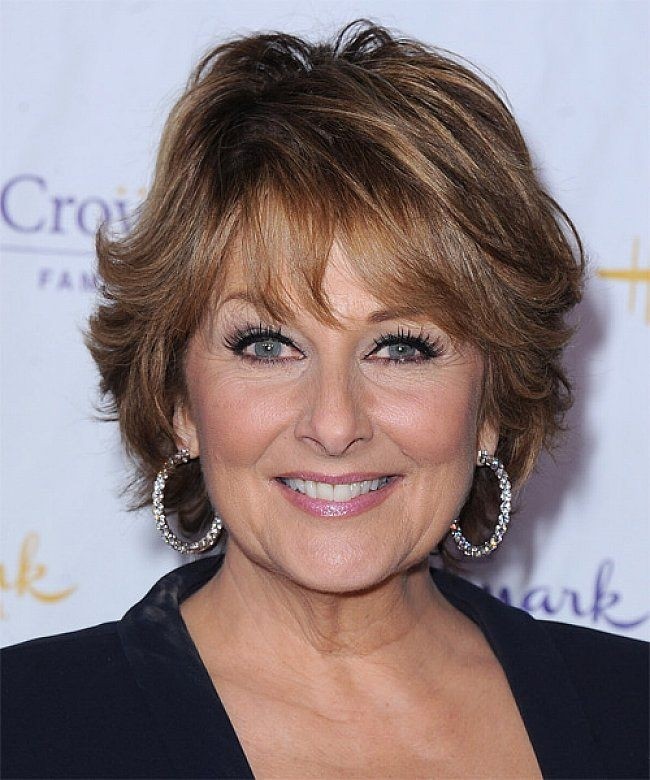 http://pophaircuts.com/images/2014/12/Short-Hairstyles-for-Women-Over-50.jpg
http://pophaircuts.com/images/2014/12/Short-Hairstyles-for-Women-Over-50.jpgOIP.M447bf878780b95a78bfe5fbb4aa36364o2
219FD56E53D0D094F03CAF5703902C7ECF1DF817EAhttp://www.esquire.com/style/advice/g1433/beautiful-women-with-short-hair-2013/
Embed Our image to your website
ThumbnailImageEmbed Our image to a Forum
ThumbnailImage
Beautiful Women with Short Hair The Hottest Women Short Haircuts
 Best Short Hairstyles Square Face furthermore Women Short Hairstylehttp://gvenny.com/images5/0316/2016-short-hairstyles-trends/2016-short-hairstyles-trends-43_4.jpg
Best Short Hairstyles Square Face furthermore Women Short Hairstylehttp://gvenny.com/images5/0316/2016-short-hairstyles-trends/2016-short-hairstyles-trends-43_4.jpgHottest Short Hairstyles Women
A hair, hairdo, or haircut identifies the styling of scalp, usually on the human head. Sometimes, this could imply an editing of beard head of hair also. The fashioning of hair can be viewed as an aspect of personal grooming, fashion, and cosmetics, although practical, cultural, and popular factors influence some hairstyles also. The oldest known depiction of hair braiding dates back about 30,000 years. In ancient civilizations, women's hair was often elaborately and carefully dressed up in special ways. In Imperial Rome, women used their hair in complicated styles. From enough time of the Roman Empire[citation needed] before Middle Ages, a lot of women grew their mane as long as it would expand in a natural way. During the Roman Empire as well as in the 16th century under western culture, women started out to wear their hair in extremely ornate styles. Within the later half of the 15th century and on into the 16th century a very high hairline on the forehead was considered attractive. During the 16th and 15th decades, Western european men wore their head of hair cropped no than shoulder-length much longer. In the early 17th century male hairstyles grew longer, with curls or waves being considered attractive.
The male wig was pioneered by King Louis XIII of France (1601-1643) in 1624. Perukes or periwigs for men were presented in to the English-speaking world with other French styles in 1660. 17th-century wigs were lengthy and wavy late, but became shorter in the mid-18th century, by which time these were normally white. Short hair for fashionable men was something of the Neoclassical movement. In the early 19th century the man beard, and also moustaches and sideburns, made a strong reappearance. Through the 16th to the 19th century, European women's hair became more visible while their hair coverings grew smaller. In the center of the 18th century the pouf style developed. During the First World Warfare, women around the global world started to shift to shorter hairstyles that were simpler to manage. In the first 1950s women's hair was generally curled and worn in a number of styles and lengths. In the 1960s, many women commenced to wear their mane in short modern cuts including the pixie cut, while in the 1970s, head of hair tended to looser be longer and. In both 1960s and 1970s many men and women wore their hair very long and straight. In the 1980s, women pulled back their hair with scrunchies. Through the 1980s, punk hair styles were adopted by some interpersonal people.
Throughout times, people have worn their scalp in a multitude of styles, largely determined by the fashions of the culture they live in. Hairstyles are signifiers and markers of social class, age, marital status, racial identification, political beliefs, and attitudes about gender.
In many ethnicities, often for religious reasons, women's head of hair is protected while in public areas, and in a few, such as Haredi Judaism or Western european Orthodox communities, women's locks is shaved or cut very brief, and protected with wigs.Only because the end of World Warfare I have women started to wear their locks brief and in reasonably natural styles.
Paleolithic
- The oldest known duplication of locks braiding lies back about 30,000 years: the Venus of Willendorf, known in academia as the Woman of Willendorf now, of a female figurine from the Paleolithic, estimated to get been made between about 28,000 and 25,000 BCE.The Venus of Brassempouy counts about 25,000 years of age and indisputably shows hairstyling.
Bronze Age
- In Bronze Era razors were known and used by some men, but not on a regular basis since the process was rather distressing and required resharpening of the tool which reduced its stamina.
Ancient history
- In early civilizations, women's mane was often elaborately and carefully dressed up in special ways. Women colored their locks, curled it, and pinned it up (ponytail) in many ways. They established their hair in waves and curls using moist clay, that they dried out in sunlight and then combed out, or else by utilizing a jelly manufactured from quince seeds soaked in normal water, or styling tongs and curling irons of varied kinds.
Roman Empire and Middle Ages
- Between 27 BC and 102 Advertising, in Imperial Rome, women wore their hair in complicated styles: a mass of curls at the top, or in rows of waves, attracted back to braids or ringlets. Eventually noblewomen's hairstyles grew so complex that they required daily attention from several slaves and a stylist in order to be maintained. The wild hair was lightened using hardwood ash, unslaked lime and sodium bicarbonate, or darkened with copper filings, oak-apples or leeches marinated in vinegar and wine. It had been augmented by wigs, hairpieces and pads, and held in place by nets, pins, pomade and combs. Under the Byzantine Empire, noblewomen covered almost all of their hair with silk pearl and caps nets.
Best Hair Styles For Short Hair Women
- It is vital to find the best short hairstyles for ladies since it performs an enormous part of your look. Getting the right hairstyle provides you with pleasure and positive emotions. Find out which hairstyle is perfect for your character and personality. You should consult your hairstylist before having a new haircut also. After all, changes are excellent and additionally, it may add positive outlook in your life. Feel absolve to browse our assortment of short hairstyles for females and choose the one that your like best.
Hottest Short Hairstyles Women
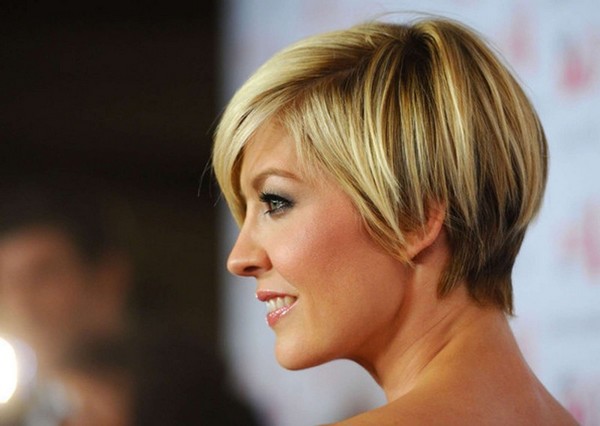 http://beautifieddesigns.com/wp-content/uploads/2015/12/hottest-short-hairstyles-women.jpg
http://beautifieddesigns.com/wp-content/uploads/2015/12/hottest-short-hairstyles-women.jpgBest short haircuts for older women Hairstyles Weekly
 http://hairstylesweekly.com/images/2012/07/Best-short-haircuts-for-older-women.jpg
http://hairstylesweekly.com/images/2012/07/Best-short-haircuts-for-older-women.jpg20 Hottest Short Hairstyles for Older Women PoPular Haircuts
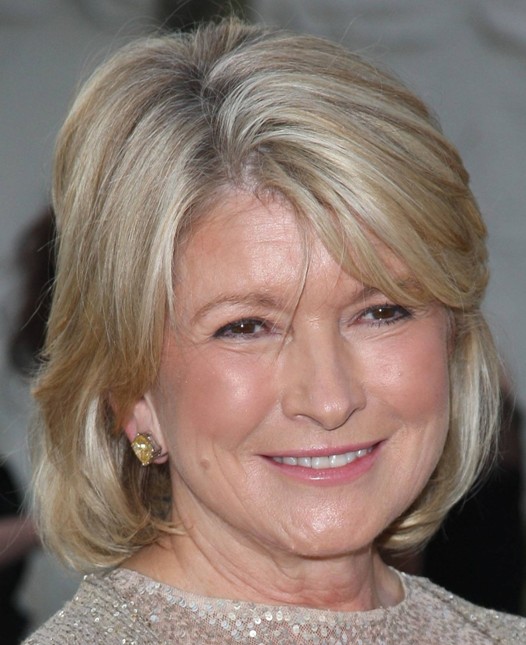 http://pophaircuts.com/images/2014/01/20-Best-Short-Hairstyles-for-Older-Women.jpg
http://pophaircuts.com/images/2014/01/20-Best-Short-Hairstyles-for-Older-Women.jpgShort Haircuts for Women: Short Hair Styles 2015 PoPular Haircuts
 http://pophaircuts.com/images/2014/12/Short-Hairstyles-for-Women-Over-50.jpg
http://pophaircuts.com/images/2014/12/Short-Hairstyles-for-Women-Over-50.jpgOIP.M0a4cf5c799add145c3a42f16ac94e99bo2
1660332ED12A18B362D0E909AC1C69F21F494CDC4Dhttp://www.hairweft.us/layered/layered-blonde-hairstyles-for-round-faces
Embed Our image to your website
ThumbnailImageEmbed Our image to a Forum
ThumbnailImage
Best Short Hairstyles Square Face furthermore Women Short Hairstyle
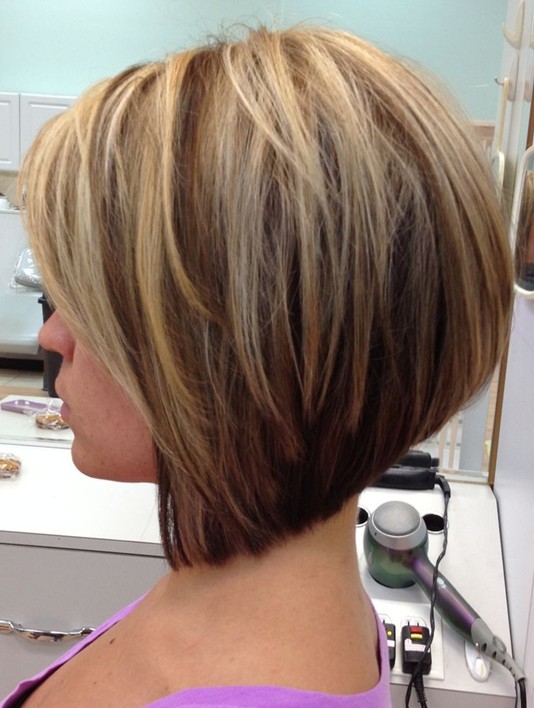 2014 Stacked Bob Haircut for Straight Hair PoPular Haircutshttp://pophaircuts.com/images/2013/10/2014-Stacked-Bob-Haircut-for-Straight-Hair.jpg
2014 Stacked Bob Haircut for Straight Hair PoPular Haircutshttp://pophaircuts.com/images/2013/10/2014-Stacked-Bob-Haircut-for-Straight-Hair.jpgBob Hairstyles Haircuts
A hairstyle, hairdo, or haircut refers to the styling of head of hair, on the real human scalp usually. Sometimes, this may also mean an editing of beard hair. The fashioning of hair can be considered an element of personal grooming, fashion, and cosmetics, although practical, cultural, and popular considerations also influence some hairstyles. The oldest known depiction of hair braiding dates back about 30,000 years. In ancient civilizations, women's locks was often elaborately and carefully dressed in special ways. In Imperial Rome, women used their scalp in complicated styles. From enough time of the Roman Empire[citation needed] before Middle Ages, many women grew their wild hair so long as it would naturally increase. Through the Roman Empire as well as in the 16th century under western culture, women started out to wear their hair in extremely ornate styles. Within the later half of the 15th century and on in to the 16th century a very high hairline on the forehead was considered attractive. During the 16th and 15th hundreds of years, European men used their head of hair cropped no more than shoulder-length. In the first 17th century male hairstyles grew longer, with waves or curls being considered desirable.
The male wig was pioneered by King Louis XIII of France (1601-1643) in 1624. Perukes or periwigs for men were introduced in to the English-speaking world with other French styles in 1660. Late 17th-century wigs were lengthy and wavy, but became shorter in the mid-18th century, where time they were normally white. Short hair for fashionable men was something of the Neoclassical movement. In the first 19th hundred years the male beard, and also moustaches and sideburns, made a solid reappearance. In the 16th to the 19th century, European women's wild hair became more noticeable while their head of hair coverings grew smaller. In the center of the 18th hundred years the pouf style developed. During the First World Warfare, women around the global world started to shift to shorter hairstyles that were easier to manage. In the early 1950s women's hair was generally curled and worn in a number of styles and lengths. In the 1960s, many women started to wear their locks in short modern cuts including the pixie cut, while in the 1970s, wild hair tended to be longer and looser. In both 1960s and 1970s many men and women wore their hair lengthy and straight. In the 1980s, women pulled back their hair with scrunchies. Through the 1980s, punk hairstyles were adopted by some social people.
Throughout times, folks have worn their mane in a wide variety of styles, largely determined by the fashions of the culture they live in. Hairstyles are markers and signifiers of social class, age, marital status, racial identification, political beliefs, and attitudes about gender.
In many civilizations, often for religious reasons, women's scalp is protected while in public, and in a few, such as Haredi Judaism or Western european Orthodox communities, women's wild hair is shaved or cut very short, and protected with wigs.Only because the end of World Battle I have women started to wear their hair short and in reasonably natural styles.
Paleolithic
- The oldest known reproduction of mane braiding lies back again about 30,000 years: the Venus of Willendorf, known in academia as the girl of Willendorf now, of a lady figurine from the Paleolithic, believed to own been made between about 28,000 and 25,000 BCE.The Venus of Brassempouy counts about 25,000 years of age and shows hairstyling indisputably.
Bronze Age
- In Bronze Time razors were known and used by some men, but not on a regular basis since the treatment was rather upsetting and required resharpening of the tool which reduced its endurance.
Ancient history
- In ancient civilizations, women's locks was often elaborately and carefully dressed in special ways. Women coloured their hair, curled it, and pinned it up (ponytail) in many ways. They establish their wild hair in waves and curls using moist clay, that they dried out in sunlight and combed out then, if not by by using a jelly manufactured from quince seeds soaked in water, or styling tongs and styling irons of varied kinds.
Roman Empire and DARK AGES
- Between 27 BC and 102 Advertisement, in Imperial Rome, women used their head of hair in complicated styles: a mass of curls on top, or in rows of waves, drawn back to braids or ringlets. Eventually noblewomen's hairstyles grew so complex that they required daily attention from several slaves and a stylist in order to be maintained. The mane was lightened using timber ash, unslaked lime and sodium bicarbonate, or darkened with copper filings, oak-apples or leeches marinated in wine beverage and vinegar. It was augmented by wigs, pads and hairpieces, and held set up by nets, pins, combs and pomade. Beneath the Byzantine Empire, noblewomen covered most of their hair with silk caps and pearl nets.
Best Hair Styles For Short Hair Women
- It is vital to choose the best short hairstyles for women since it performs a huge part of your style. Having the right hairstyle can provide you with joy and positive thoughts. Find out which hairstyle is perfect for your character and personality. You should also consult your hairstylist before having a new haircut. After all, changes are excellent and it can also add positive outlook in your life. Feel free to browse our collection of short hairstyles for ladies and choose the the one which your like best.
Most Trendy Bob Hairstyles 20142015 WardrobeLooks.com
 http://wardrobelooks.com/wp-content/uploads/2014/04/Most-Trendy-Bob-Hairstyles-2014-2015-8.jpg
http://wardrobelooks.com/wp-content/uploads/2014/04/Most-Trendy-Bob-Hairstyles-2014-2015-8.jpgbob hairstyles, bob haircut, short hairstyles short bob hairstyle
 http://trendy-hairstyles-for-women.com/pictures/hairstyles/short-hairstyles-for-women/short-bob-haircuts/layered-bob-haircut_b.jpg
http://trendy-hairstyles-for-women.com/pictures/hairstyles/short-hairstyles-for-women/short-bob-haircuts/layered-bob-haircut_b.jpgChic bob haircuts Love Hairstyle
 http://www.lhairstyle.com/wp-content/uploads/2012/08/Chic-bob-haircuts1.jpg
http://www.lhairstyle.com/wp-content/uploads/2012/08/Chic-bob-haircuts1.jpgbob style haircutsshort bob style haircuts 2012short layered bob
.jpg) https://blogger.googleusercontent.com/img/b/R29vZ2xl/AVvXsEiG03It57af3cFAZTg4ydtJnY-mOpXo6JKYtQ0wEe_CZnRfA-BJJIkZg4WuCDuapbjtymE3WFhGmQw-5bPK9P2q4qrs7Tryz-GWrbxOlBZEgBkAbzpfzpDmaavrGfFSqW3wDltVbUYKXWjX/s1600/Short-Bob-Style-Haircuts+(10).jpg
https://blogger.googleusercontent.com/img/b/R29vZ2xl/AVvXsEiG03It57af3cFAZTg4ydtJnY-mOpXo6JKYtQ0wEe_CZnRfA-BJJIkZg4WuCDuapbjtymE3WFhGmQw-5bPK9P2q4qrs7Tryz-GWrbxOlBZEgBkAbzpfzpDmaavrGfFSqW3wDltVbUYKXWjX/s1600/Short-Bob-Style-Haircuts+(10).jpgOIP.M22d37d81f205037f33ce7ef798dafeadH0
21CD4134B235D883D33E68CFC423AB636469C1AEE1http://pophaircuts.com/12-stacked-bob-haircuts-short-hairstyle-trends/2014-stacked-bob-haircut-for-straight-hair
Embed Our image to your website
ThumbnailImageEmbed Our image to a Forum
ThumbnailImage
2014 Stacked Bob Haircut for Straight Hair PoPular Haircuts
.jpg) hairstyles pictures hairstyles pictures hairstyles pictures hairstyleshttps://blogger.googleusercontent.com/img/b/R29vZ2xl/AVvXsEiEWzxnfvoNQQWAX-8BBP3O3RgG80iWOrqaPyJNHbdwGi7NEBqsEI7FPhBiBG7Vrax0N55KjbdWm_eKIe-XhiQkke5eu5TCP5z6t3qUidpKGQup7UY8ryx8amXOM_RueNRR4yB9ysOpo6E/s1600/short-hairstyles-pictures-for-women-2012+(2).jpg
hairstyles pictures hairstyles pictures hairstyles pictures hairstyleshttps://blogger.googleusercontent.com/img/b/R29vZ2xl/AVvXsEiEWzxnfvoNQQWAX-8BBP3O3RgG80iWOrqaPyJNHbdwGi7NEBqsEI7FPhBiBG7Vrax0N55KjbdWm_eKIe-XhiQkke5eu5TCP5z6t3qUidpKGQup7UY8ryx8amXOM_RueNRR4yB9ysOpo6E/s1600/short-hairstyles-pictures-for-women-2012+(2).jpgLovely Short Hairstyles For Women
A hairstyle, hairdo, or haircut refers to the styling of locks, usually on the human being head. Sometimes, this may also mean an editing of beard hair. The fashioning of hair can be viewed as an aspect of personal grooming, fashion, and cosmetics, although practical, cultural, and popular considerations also influence some hairstyles. The oldest known depiction of hair braiding dates back about 30,000 years. In historic civilizations, women's head of hair was often elaborately and carefully dressed in special ways. In Imperial Rome, women wore their hair in complicated styles. From the time of the Roman Empire[citation needed] before Middle Ages, most women grew their hair so long as it could expand normally. During the Roman Empire as well as in the 16th century in the western world, women started out to wear their hair in extremely ornate styles. Within the later half of the 15th century and on in to the 16th century a very high hairline on the forehead was considered attractive. During the 16th and 15th hundreds of years, Western european men used their wild hair cropped no than shoulder-length much longer. In the early 17th century male hairstyles grew longer, with curls or waves being considered advisable.
The male wig was pioneered by Ruler Louis XIII of France (1601-1643) in 1624. Periwigs or perukes for men were unveiled into the English-speaking world with other French styles in 1660. 17th-century wigs were lengthy and wavy late, but became shorter in the mid-18th century, where time these were white normally. Short hair for fashionable men was a product of the Neoclassical movement. In the early 19th hundred years the man beard, and also moustaches and sideburns, made a strong reappearance. From your 16th to the 19th century, European women's mane became more visible while their locks coverings grew smaller. In the center of the 18th century the pouf style developed. Through the First World Conflict, women around the global world started to shift to shorter hairstyles that were better to manage. In the first 1950s women's hair was generally curled and worn in a variety of styles and lengths. In the 1960s, many women began to wear their hair in a nutshell modern cuts including the pixie cut, while in the 1970s, mane tended to be longer and looser. In both 1960s and 1970s a lot of men and women wore their head of hair very straight and long. In the 1980s, women pulled back their hair with scrunchies. Through the 1980s, punk hair styles were implemented by some people.
Throughout times, folks have worn their wild hair in a multitude of styles, determined by the fashions of the culture they stay in largely. Hairstyles are signifiers and markers of social class, age, marital status, racial identification, political beliefs, and attitudes about gender.
In many ethnicities, for religious reasons often, women's hair is protected while in public, and in some, such as Haredi Judaism or Western Orthodox neighborhoods, women's locks is shaved or trim very brief, and protected with wigs.Only since the end of World Warfare I have women begun to wear their head of hair short and in rather natural styles.
Paleolithic
- The oldest known reproduction of head of hair braiding lies again about 30,000 years: the Venus of Willendorf, now known in academia as the girl of Willendorf, of a female figurine from the Paleolithic, believed to acquire been made between about 28,000 and 25,000 BCE.The Venus of Brassempouy matters about 25,000 years of age and indisputably shows hairstyling.
Bronze Age
- In Bronze Age group razors were known and used by some men, but not on a daily basis since the procedure was rather annoying and required resharpening of the tool which reduced its strength.
Ancient history
- In ancient civilizations, women's hair was often elaborately and carefully dressed in special ways. Women coloured their head of hair, curled it, and pinned it up (ponytail) in a variety of ways. They arranged their wild hair in waves and curls using wet clay, that they dried out in the sun and then combed out, if not by utilizing a jelly manufactured from quince seed products soaked in water, or styling tongs and curling irons of varied kinds.
Roman Empire and Middle Ages
- Between 27 BC and 102 Advertisement, in Imperial Rome, women used their hair in complicated styles: a mass of curls on top, or in rows of waves, attracted back to ringlets or braids. Eventually noblewomen's hairstyles grew so complex that they required daily attention from several slaves and a stylist in order to be maintained. The scalp was lightened using lumber ash, unslaked lime and sodium bicarbonate, or darkened with copper filings, oak-apples or leeches marinated in vinegar and wine beverage. It was augmented by wigs, pads and hairpieces, and held in place by nets, pins, pomade and combs. Beneath the Byzantine Empire, noblewomen covered most of their hair with silk pearl and caps nets.
Best Hair Styles For Short Hair Women
- It is vital to find the best short hair styles for ladies since it plays a huge part of your look. Getting the right hairstyle can provide you with enjoyment and positive feelings. Find out which hairstyle is exquisite for your personality and character. You should also seek advice from your hairstylist before having a new haircut. After all, changes are great and it can add positive prospect in your daily life also. Feel free to browse our assortment of short hairstyles for females and select the the one that your like best.
Short Hairstyles for Women over 50 Inspired by Celebrities
 http://www.allfashionstyles.com/wp-content/uploads/2015/05/short-hairstyles-for-women-over-50_4.jpg
http://www.allfashionstyles.com/wp-content/uploads/2015/05/short-hairstyles-for-women-over-50_4.jpg25+ Best Short Haircuts For Women
 http://impfashion.com/wp-content/uploads/2014/03/short-haircuts-for-women-25.jpg
http://impfashion.com/wp-content/uploads/2014/03/short-haircuts-for-women-25.jpgBeautiful Short Hairstyles for Black Women Short Hairstyles Trendy
 http://www.shorthaircutstrendy.com/wp-content/uploads/2014/06/beautiful-short-hairstyles-for-black-women-9.jpg
http://www.shorthaircutstrendy.com/wp-content/uploads/2014/06/beautiful-short-hairstyles-for-black-women-9.jpgProm hairstyles 2012: MEDIUM BOB HAISRTYLES 2013 ARE VERY BEAUTIFUL
 https://blogger.googleusercontent.com/img/b/R29vZ2xl/AVvXsEjrFyl89C0VhFVTtbihxY26PZjn93u-W_3TzuHEg2HfMvnn5jaOfdHUNXnEEfhLE0sBrPNnlJThpwFfEL2NP6GiPtM1HzzpYNvmPLLRYXbRLyvAMGTTcwwrn7zkeuhIZi8MdMoxcrfYKa-P/s1600/Best-Short-Haircuts-for-Older-Women-6.jpg
https://blogger.googleusercontent.com/img/b/R29vZ2xl/AVvXsEjrFyl89C0VhFVTtbihxY26PZjn93u-W_3TzuHEg2HfMvnn5jaOfdHUNXnEEfhLE0sBrPNnlJThpwFfEL2NP6GiPtM1HzzpYNvmPLLRYXbRLyvAMGTTcwwrn7zkeuhIZi8MdMoxcrfYKa-P/s1600/Best-Short-Haircuts-for-Older-Women-6.jpgOIP.Mbf9f7d57634ba71bab5fef8d92128cdbo1
17E0B1CBF3D5182D60F05BF8295B1AD59F05C6CBEhttp://whairstyles.blogspot.com/2012/06/short-hairstyles-pictures-for-women.html
Embed Our image to your website
ThumbnailImageEmbed Our image to a Forum
ThumbnailImage
.jpg)
.jpg)

